Time: 11:00AM – 4:30PM
Location: Big Horn Sheep Canyon
Arkansas River 03/27/2024 Photo Album
I was seeking warmer temperatures somewhere in Colorado after another slug of winter hit the state on Sunday, March 24, 2024. As I scanned my Weather Underground app, I noted that most highs were in the 40’s, and I am averse to fishing in winter conditions. However, I discovered a ray of hope, when I tapped on the Canon City location, where the high on Wednesday was expected to peak at 52 degrees. I decided to explore the lower Arkansas River.
I was reluctant to fish in the lower canyon because of the Hayden Creek fire burn scar and subsequent ash flows leading to reduced insect populations and subsequently an impact on trout numbers. For this reason I avoided the area over the intervening eight years, but weather considerations caused me to reevaluate. I called ArkAnglers, and the gentleman I talked to assured me that the lower canyon had recovered, so that became my destination.
Road construction on I25 and major road work in Canon City slowed my progress, but I arrived at my chosen destination by 10:30AM. I was excited to renew my acquaintance with a favorite spot in lower Big Horn Sheep Canyon. The temperature was 42 degrees, as I prepared to fish. I donned my Under Armour long sleeve thermal undershirt, fleece cardigan, North Face light down coat and rain shell along with my billed New Zealand hat with earflaps. I was layered up and prepared for the cold. For a fly casting instrument I chose my newest Sage R8 four weight.
I began in a section of the main river that ran next to US24. The river was tinged with color, so I rigged with a strike indicator, split shot, molting rubber legs stonefly, and 20 incher. I utilized lots of weight, and It was at this point that I discovered that I lost the wool material for my New Zealand strike indicator, so I was forced to deploy an orange Thingamabobber.
I worked the deep, slow moving slicks next to the steep rocky bank for 45 minutes, until I got snagged. The wedged flies were in a spot that was too fast and deep to risk a rescue, so I yanked directly on the line and popped off both flies and the split shot. I replaced the tandem with an emerald caddis pupa and classic RS2, and just before I quit for lunch, a nice, thick rainbow nailed the caddis emerger. I was on the board, but my hands were stinging from the cold, and it was lunch time, so I climbed the bank and returned to the car. I grabbed my lunch and sat in the drivers seat, and I turned on the car to check the temperature, and it displayed 36 degrees. How could this be?
When I returned to the river, I added fingerless wool gloves to my winter attire, and I crossed the highway and several braids to reach the northern-most channel. For the remainder of the afternoon I worked my way up the entire north branch and landed another seven trout. One additional trout took the caddis pupa, and the remainder snatched the RS2, The rainbow that grabbed the pupa, broke off the RS2 in the process of fighting, and I replaced it with a sparkle wing version of the RS2.
Around 2PM the pace of the action increased noticeably, and I spotted a few natural olives above the river along with two bankside risers; however, my success rate was such that I stuck with the indicator nymphing set up. Clearly, however, the fish were tuned into baetis activity in the mid to late afternoon.
In addition to the eight fish that I landed on the day, I experienced at least six additional trout hook ups, that I fought for varying lengths of time, before they managed to escape. The downside of using size 20 RS2’s is the lower ratio of hooked to landed fish. One of these fugitives from my hook point was a decent rainbow that totally cleared the surface of the river and snapped off the RS2, as the aggressive fish splashed back down. I replaced the sparkle wing with a beadhead soft hackle emerger, and that yielded a few fish over the remainder of my time on the river.
Surprisingly, five of the landed trout were rainbows, with the remainder being browns. I say surprisingly because memory tells me that this section of the Arkansas River was ninety percent brown trout, when I fished it eight years ago prior to the Hayden Fire. The size of the trout was quite favorable with nearly all falling within the twelve to fourteen inch range, with chunky thirteen inch fish being the norm.
As I hiked back along the main stem of the river at 4PM, I spotted some rising trout along the near bank, and I could see more naturals drifting up from the river, than I had seen previously. This observation caused me to extend my day, and I removed all the nymphing accoutrements and tied on a CDC BWO. By the time I reconfigured, however, the flurry of surface feeding subsided, but I did manage to get a look from the most upstream feeder. I was having issues with tracking the tiny fly in the surface glare, so I added a peacock hippie stomper as the forward fly, but that move failed to produce success, so I called it quits and returned to the Telluride.
While I would have preferred more surface feeding and dry fly action, I was quite pleased with my day. Eight nice trout over four hours equals an average of two fish per hour catch rate, but this could have easily been better, had I converted more of my connections. The size of the trout was satisfactory, and the trout were hot fighters that challenged my fish fighting abilities. This was my first usage of the indicator nymphing technique in quite awhile, and I was pleased with my ability to achieve success. Above all, I discovered that the lower Big Horn Sheep Canyon has, indeed, recovered from the fire, and I will surely add the area as a future fly fishing destination.
Landed Fish: 8

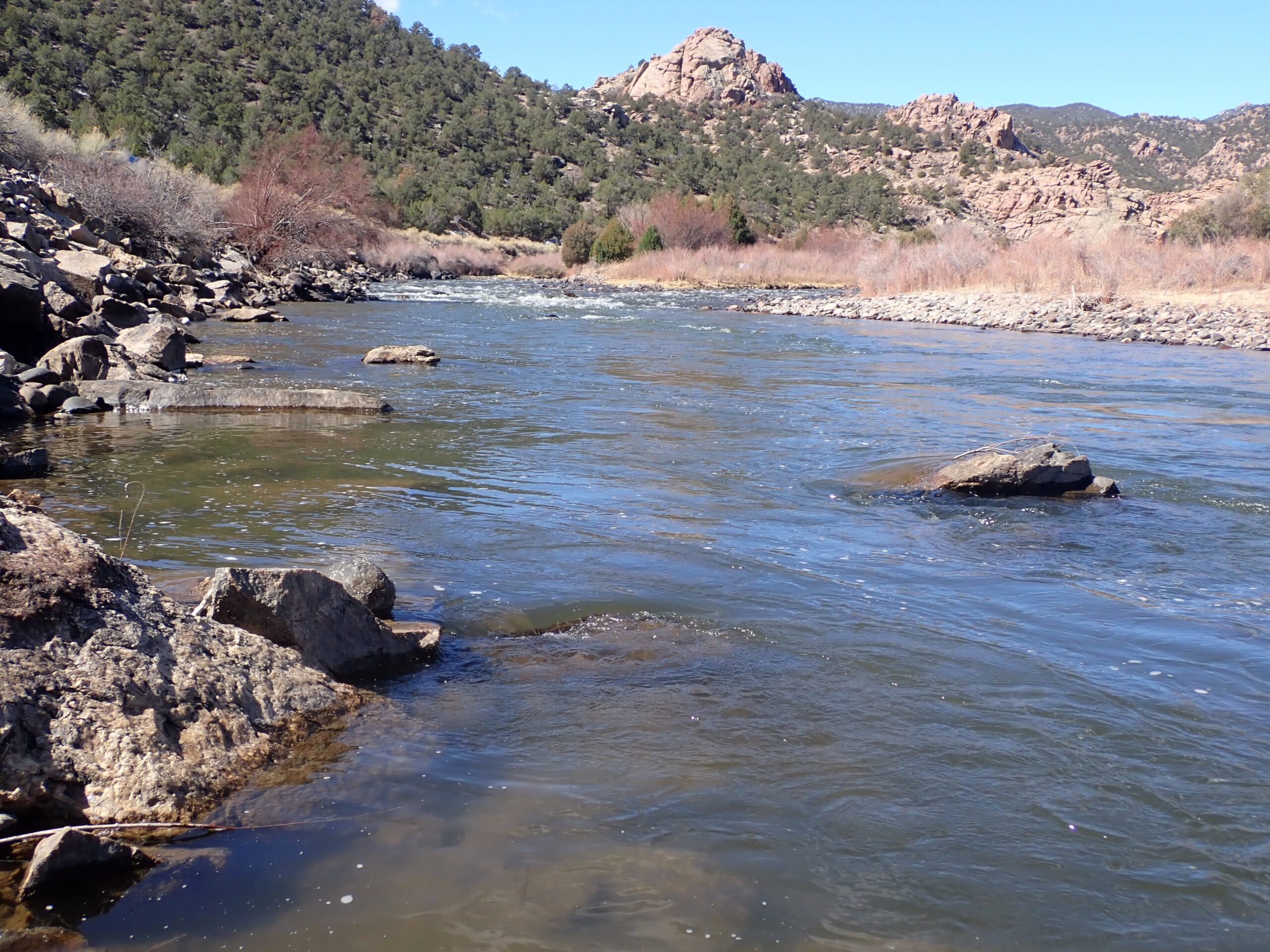
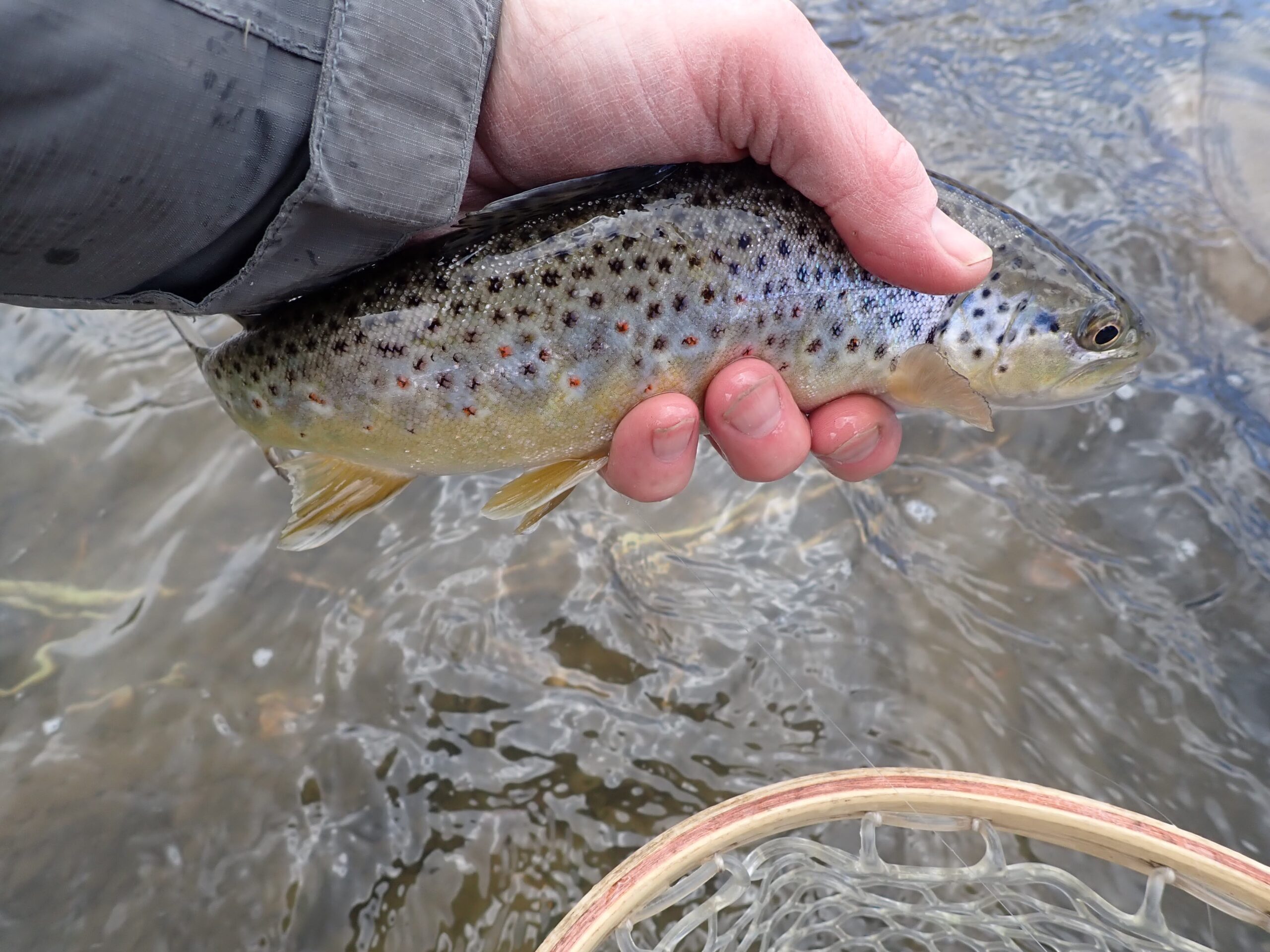
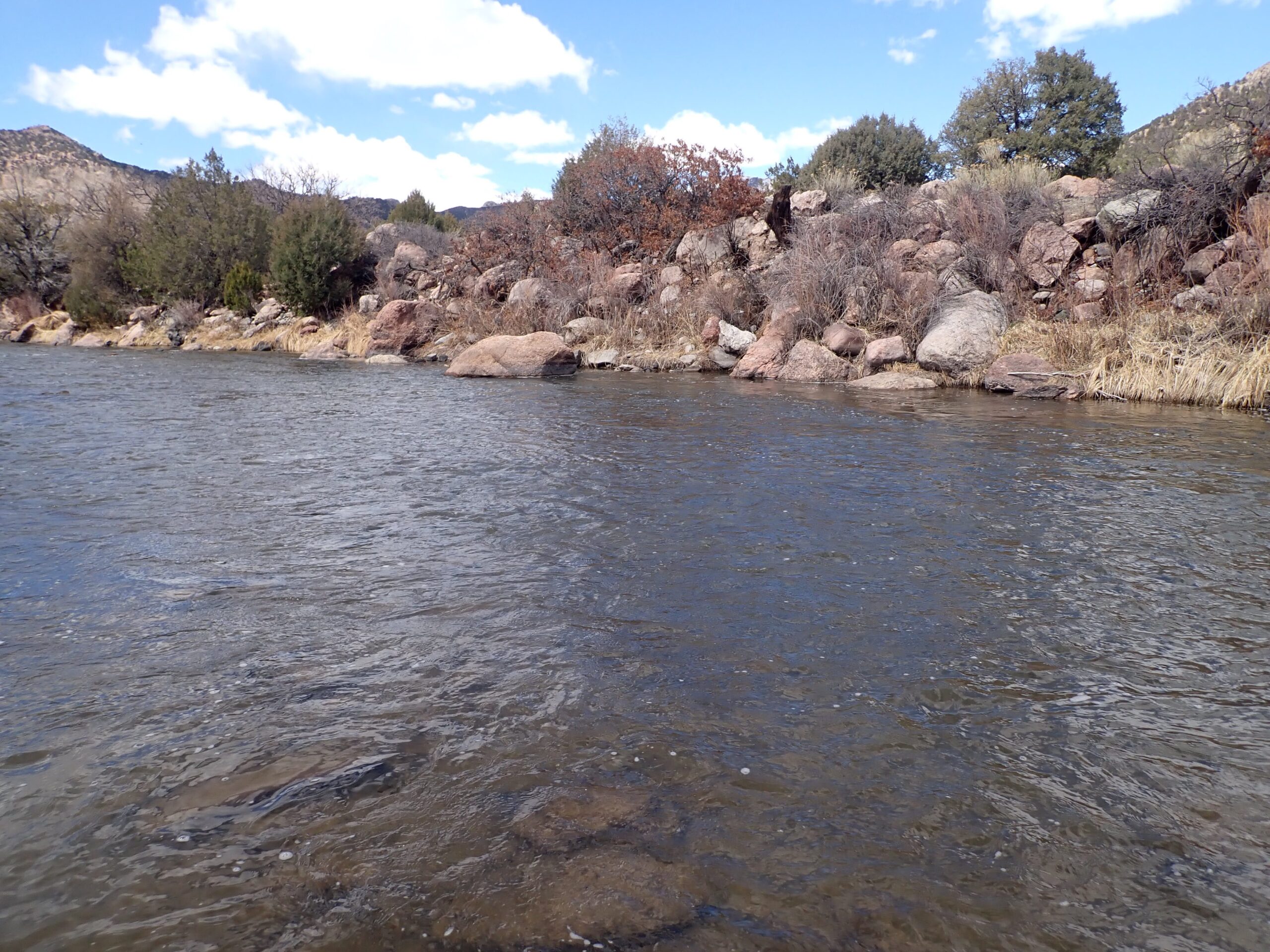
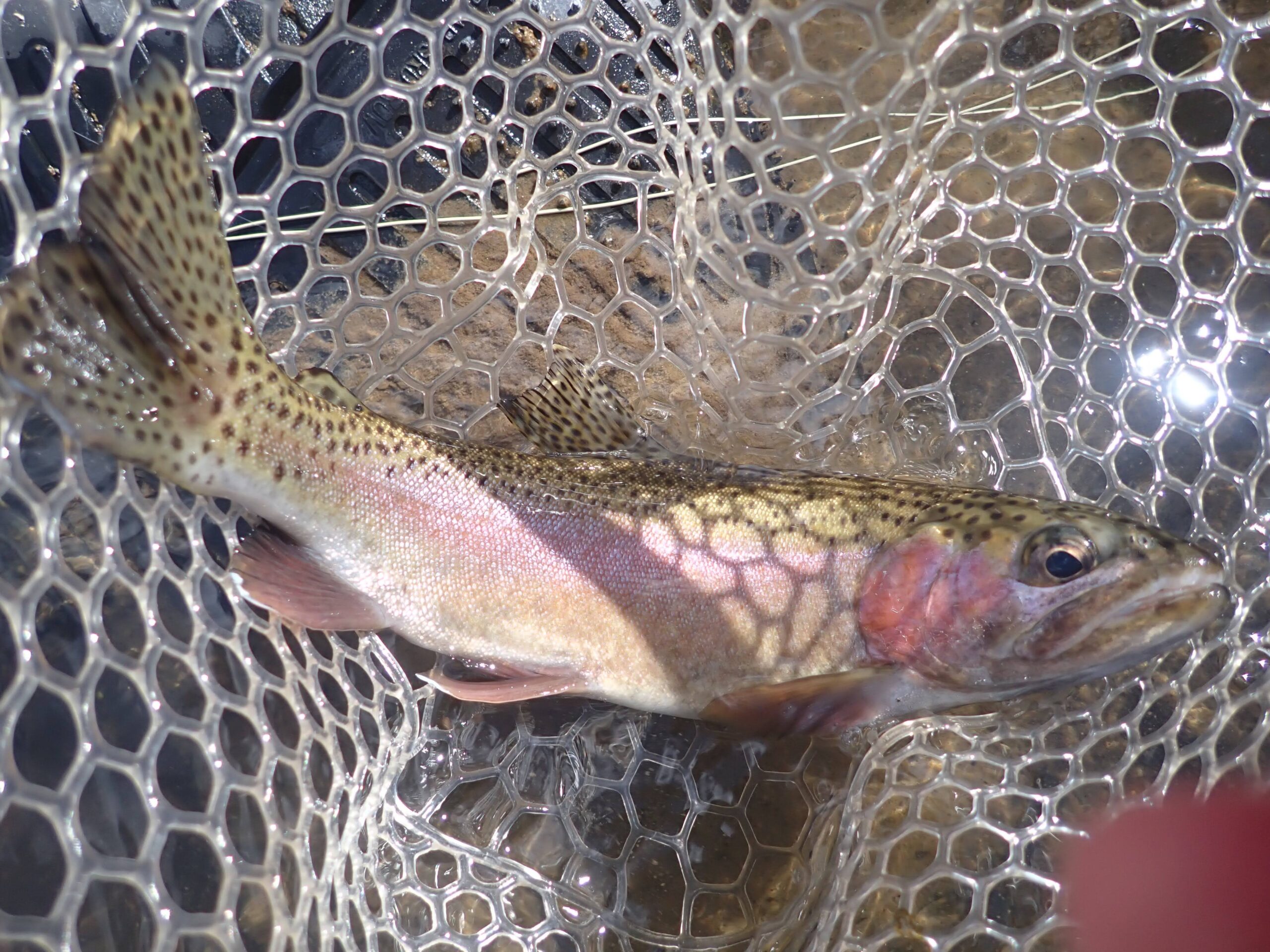
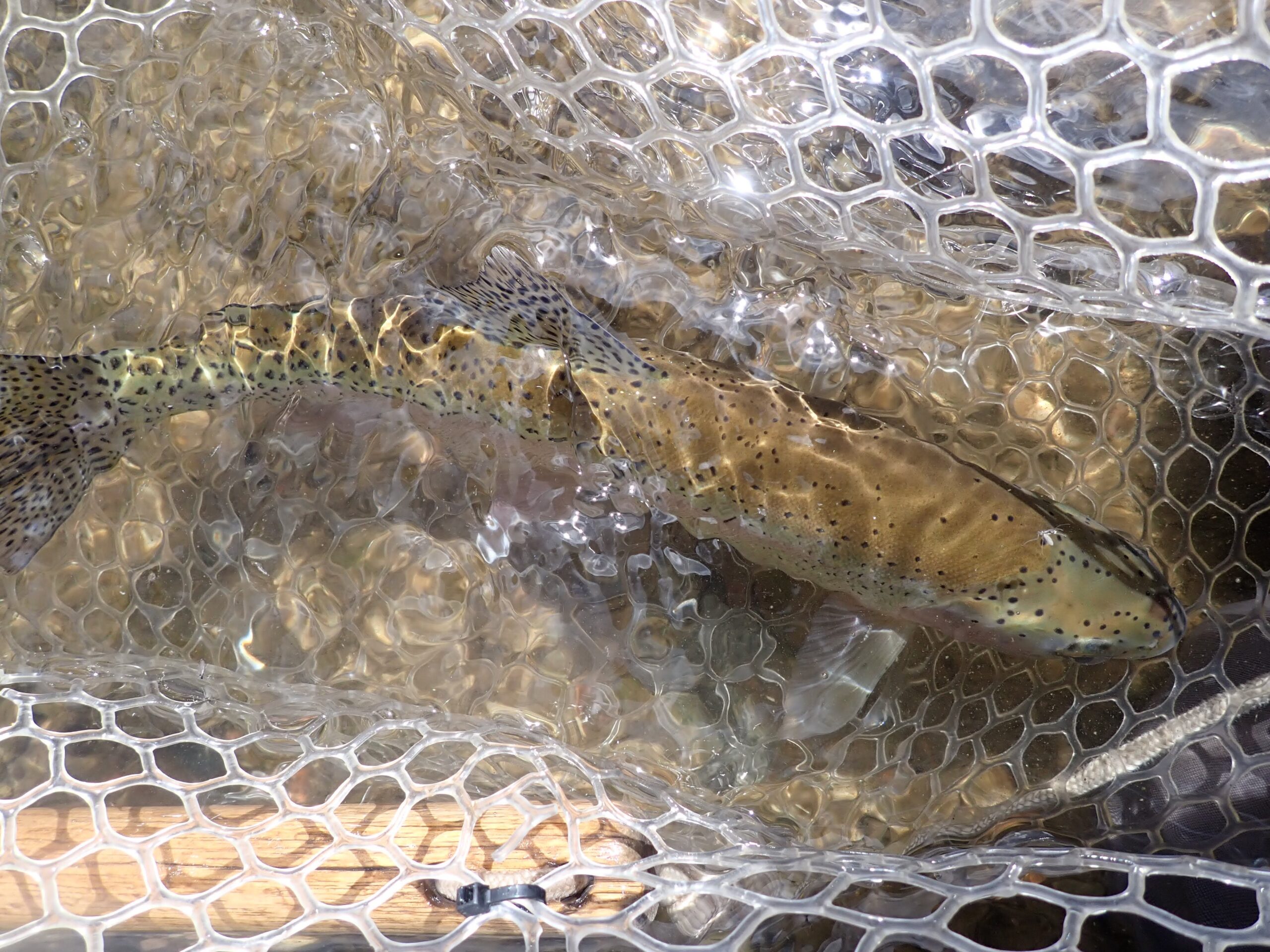
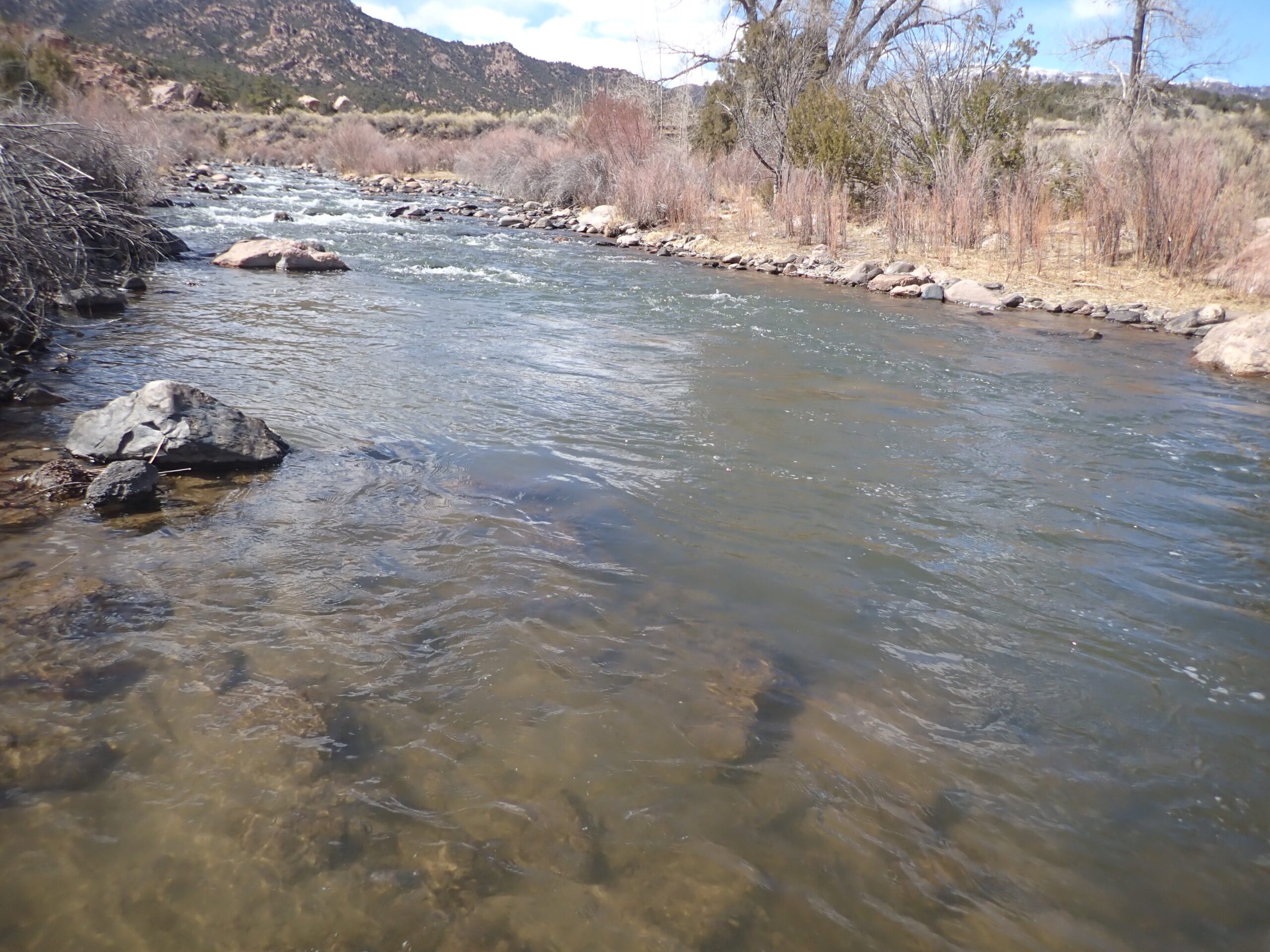
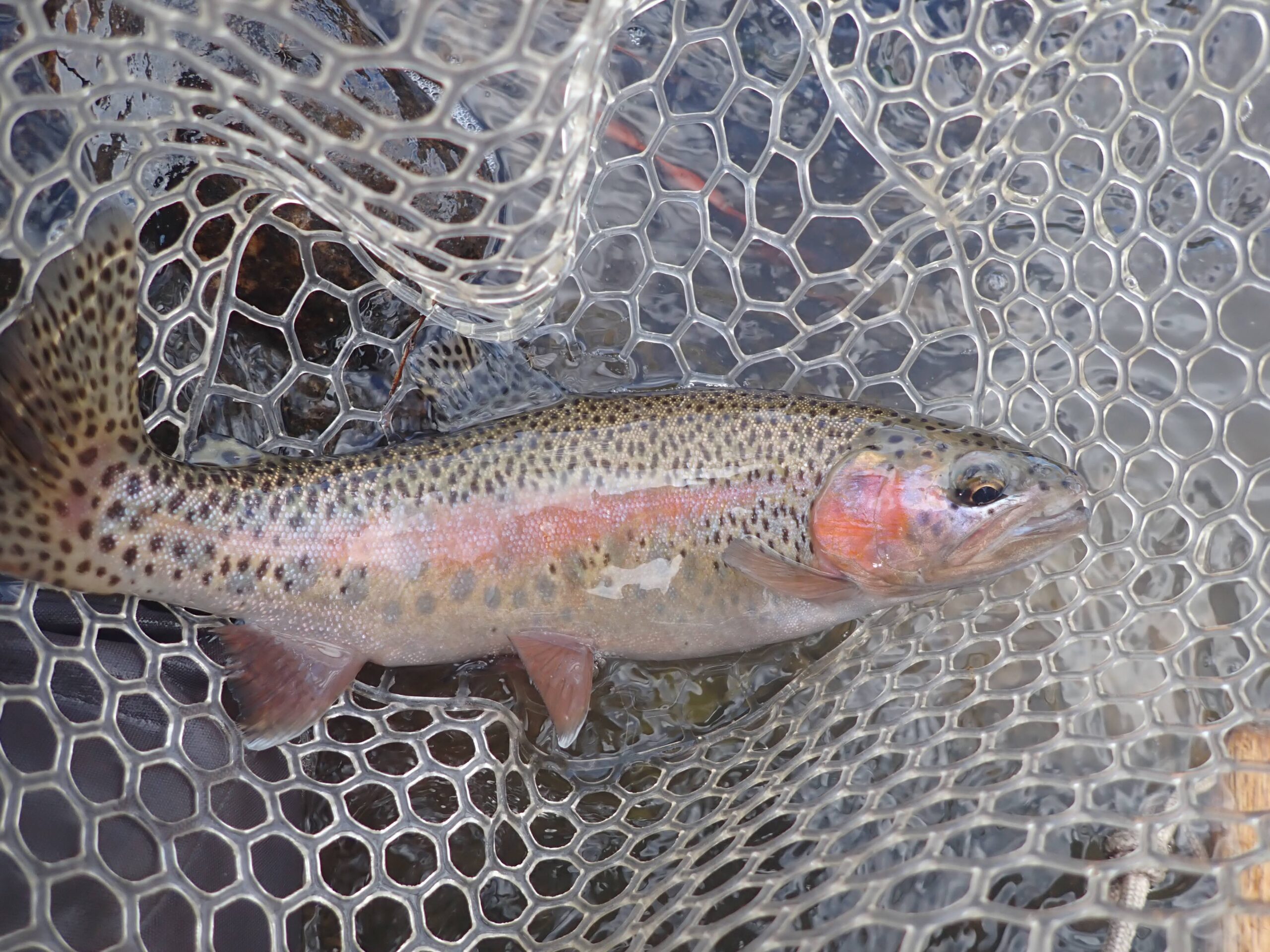
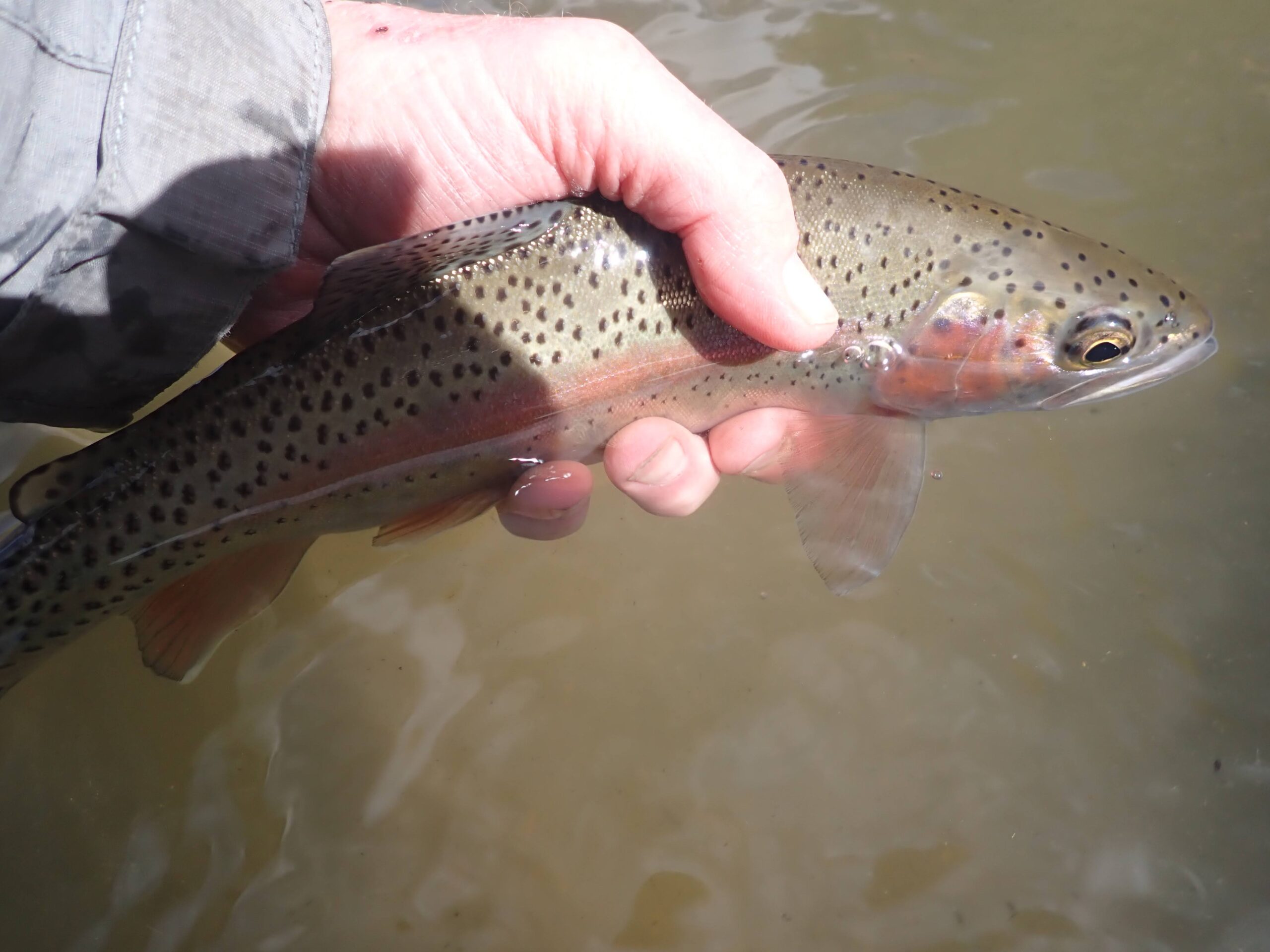
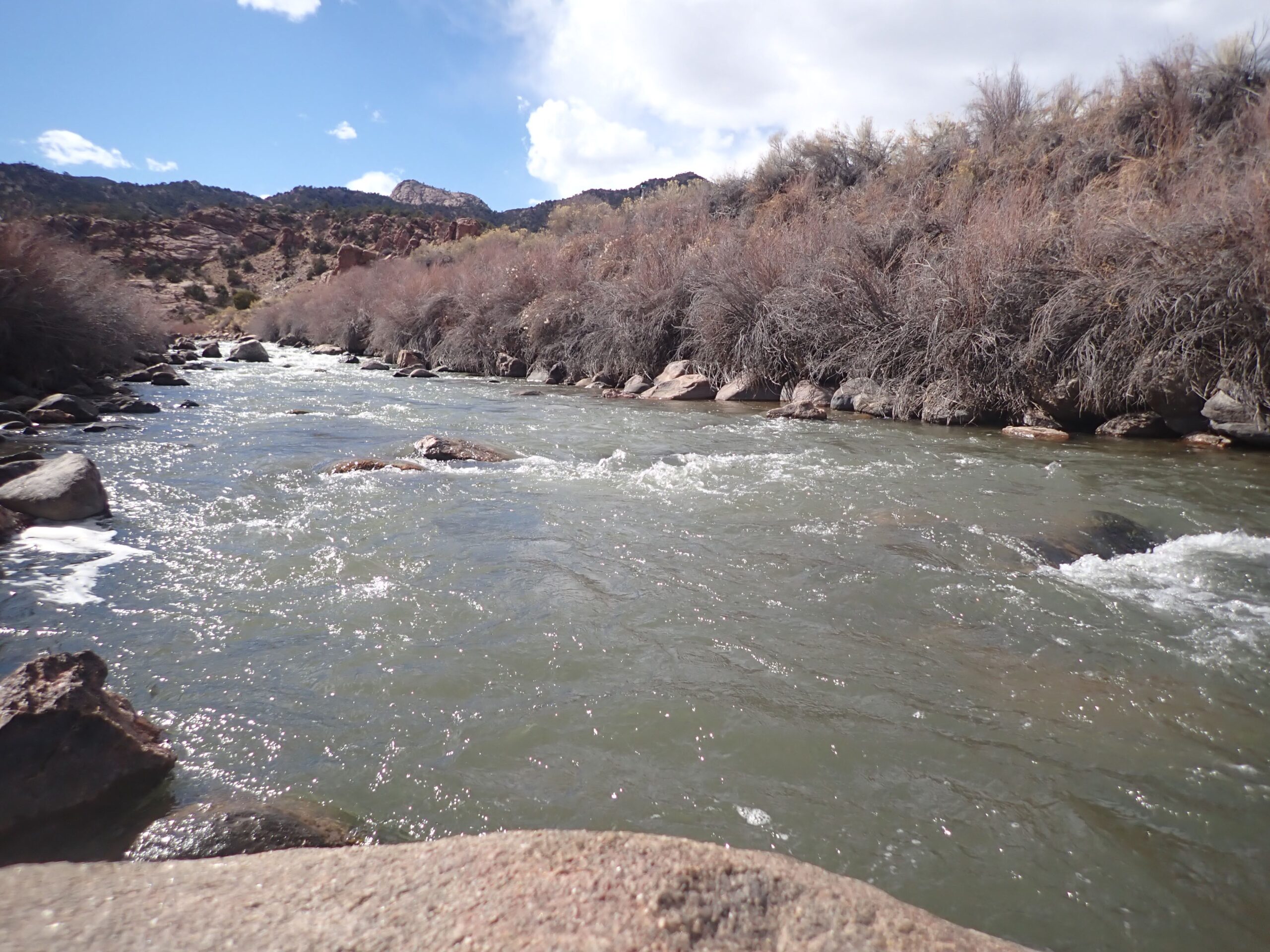
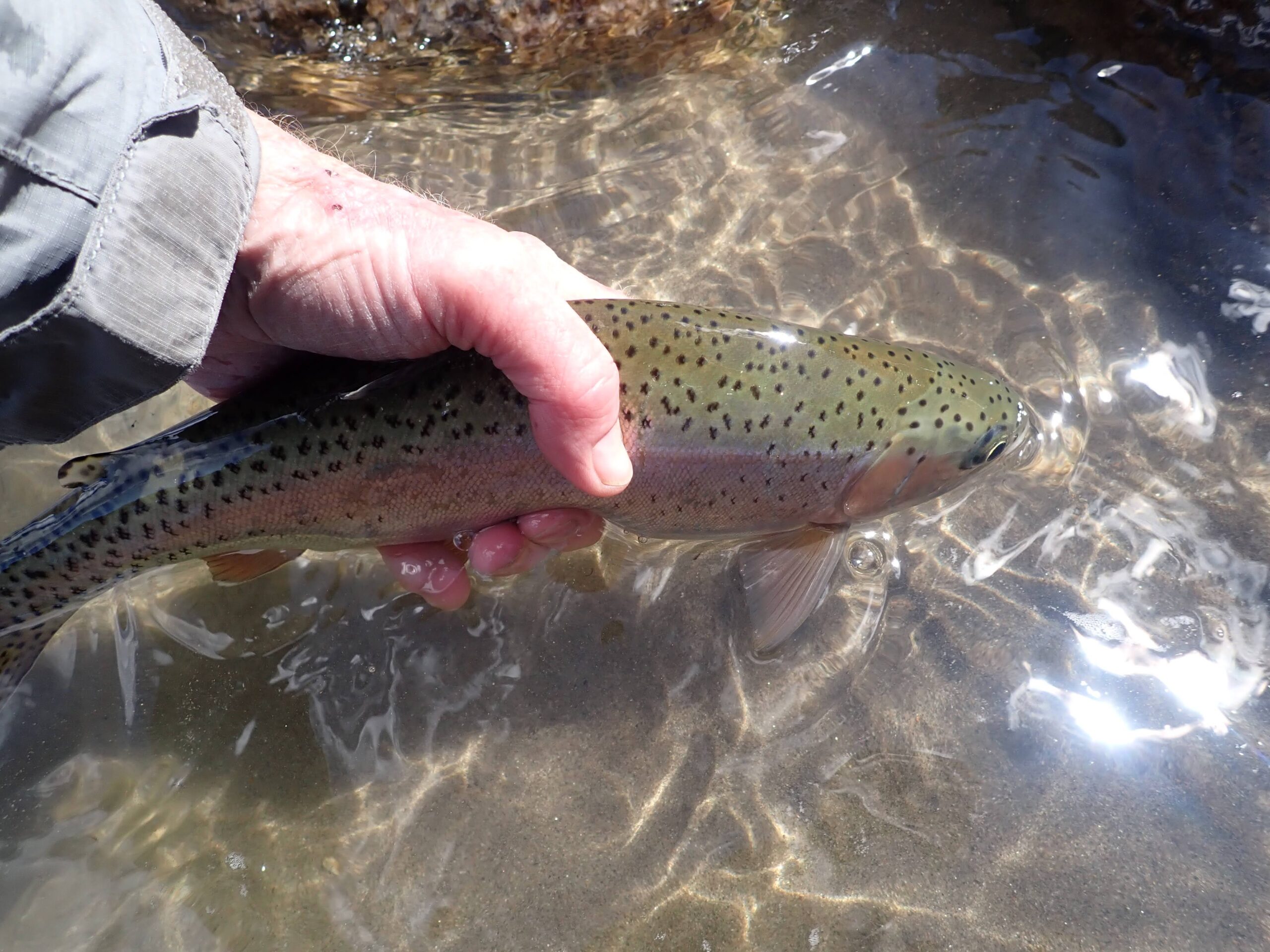
Nice going Dave! Your skill in choosing the right fly/indicator combination rewarded you this day.